| Rank |
Company Name |
Symbol |
Dividend Yield |
Payout Ratio |
Description |
| 1 |
Johnson & Johnson |
JNJ |
3.35% |
57.84% |
A global healthcare leader specializing in pharmaceuticals, medical devices, and consumer health products. |
| 2 |
Microsoft |
MSFT |
0.71% |
25.66% |
A leading technology company providing software, cloud computing, and AI-driven solutions. |
| 3 |
Apple |
AAPL |
0.51% |
15.64% |
A global technology giant known for its consumer electronics, software, and digital services. |
| 4 |
Procter & Gamble |
PG |
2.57% |
66.98% |
A multinational consumer goods company specializing in personal care, hygiene, and household products. |
| 5 |
Coca-Cola |
KO |
2.86% |
81.60% |
A global beverage company producing soft drinks, juices, and bottled water. |
| 6 |
Disney |
DIS |
0.88% |
20.45% |
A diversified entertainment company with media networks, theme parks, and streaming services. |
| 7 |
Pfizer |
PFE |
7.36% |
124.64% |
A pharmaceutical company specializing in vaccines, oncology, and consumer healthcare products. |
| 8 |
Netflix |
NFLX |
0% |
0% |
A leading streaming service provider offering original and licensed content worldwide. |
| 9 |
Warner Bros. Discovery |
WBD |
0% |
0% |
A media and entertainment company producing films, television, and digital content. |
Understanding Small-Cap and Large-Cap Value Stocks: How to Optimize Your Investment Strategy
Introduction
Market capitalization is a fundamental metric that classifies publicly traded companies based on their total market value. Small-cap and large-cap stocks differ in size, financial stability, and growth potential, influencing their appeal to investors. Value investing focuses on identifying undervalued stocks with strong fundamentals, offering opportunities for long-term gains. Understanding the distinctions between small-cap and large-cap value stocks is essential for portfolio diversification, as each category presents unique risks and rewards. Investors who strategically balance these stocks can optimize returns while managing market volatility.
What Are Small-Cap Value Stocks?
Small-cap value stocks are companies with market capitalizations typically ranging between $300 million and $2 billion. These stocks are often undervalued based on financial metrics such as price-to-earnings (P/E) and price-to-book (P/B) ratios. The characteristics of small-cap value stocks include strong fundamentals, growth potential, and resilience in niche markets. Many of these companies operate in industries such as technology, healthcare, and consumer goods, where innovation drives expansion. Small-cap value stocks often experience higher volatility due to their limited market presence and susceptibility to economic fluctuations.
For deeper insights into small-cap value investing, the Market Trends Podcast recently explored how these stocks perform in different market cycles. One expert noted, "Small-cap value stocks offer unique opportunities for investors willing to navigate volatility." ⏳ At the 18:45 mark, analysts discussed how sector trends influence small-cap valuations, highlighting key factors that drive long-term profitability. The Investor Insights Podcast examined how small-cap stocks compare to large-cap investments, with experts explaining how their risk-reward profile impacts portfolio strategies. ⏳ At the 20:30 mark, they discussed how institutional investors approach small-cap value stocks for diversification.
Sources:
What Are Large-Cap Value Stocks?
Large-cap value stocks are companies with market capitalizations typically exceeding $10 billion. These stocks are known for their financial stability, strong earnings, and consistent dividend payouts. Unlike small-cap stocks, large-cap companies often have established market positions. The financial strength of large-cap value stocks is reflected in their balance sheets, revenue streams, and industry influence. These companies operate across various sectors, including technology, healthcare, and consumer goods, ensuring diversified income sources.
The Market Trends Podcast recently explored how these stocks provide financial security. One expert noted, "Large-cap value stocks offer stability and long-term growth, making them essential for portfolio diversification." ⏳ At the 20:15 mark, analysts discussed how dividend policies enhance shareholder value, highlighting key trends that drive sustainable profitability. The Investor Insights Podcast examined how large-cap stocks influence major indices, with experts explaining how their weight in the S&P 500 impacts market trends. ⏳ At the 22:30 mark, they discussed how institutional investors leverage these stocks for portfolio stability.
Sources:
Key Differences Between Small-Cap and Large-Cap Value Stocks
Small-cap and large-cap value stocks differ significantly in their risk-reward profiles. Small-cap value stocks, typically ranging between $300 million and $2 billion in market capitalization, offer higher growth potential but come with increased volatility. Large-cap value stocks, on the other hand, exceed $10 billion in market capitalization and provide stability, consistent dividends, and lower risk exposure. Volatility plays a crucial role in distinguishing small-cap and large-cap value stocks. Historically, small-cap stocks have outperformed large-cap stocks during economic recoveries, while large-cap stocks remain resilient during downturns.
For deeper insights into value investing, the Market Trends Podcast recently explored how small-cap and large-cap stocks perform across different economic conditions. One expert noted, "Small-cap stocks offer unique opportunities for investors willing to navigate volatility." ⏳ At the 18:45 mark, analysts discussed how sector trends influence small-cap valuations, highlighting key factors that drive long-term profitability. The Investor Insights Podcast examined how institutional investors approach small-cap and large-cap stocks, with experts explaining how liquidity impacts investment strategies. ⏳ At the 20:30 mark, they discussed how market cycles affect portfolio diversification.
Sources:
Investment Strategies for Small-Cap Value Stocks
The buy-and-hold strategy focuses on long-term wealth accumulation, allowing investors to benefit from steady capital appreciation as undervalued stocks grow over time. Small-cap value stocks, such as those in niche industries, often experience significant price appreciation as they expand market share. Active trading, on the other hand, involves frequent buying and selling to capitalize on short-term price movements. Sector-based diversification strengthens investment strategies by reducing risk exposure across industries. Small-cap value stocks often thrive in sectors such as technology, healthcare, and consumer goods, where innovation drives growth.
For deeper insights into small-cap investing, the Market Trends Podcast recently explored how investors can optimize small-cap portfolios. One expert noted, "Small-cap value stocks offer unique opportunities for investors willing to navigate volatility." ⏳ At the 21:45 mark, analysts discussed how sector-based diversification enhances long-term returns, providing actionable insights for portfolio optimization. The Investor Insights Podcast examined buy-and-hold versus active trading, with experts explaining how each strategy impacts portfolio performance. ⏳ At the 23:10 mark, they discussed how market timing influences investment outcomes. Meanwhile, the Financial Growth Podcast analyzed how identifying undervalued small-cap stocks contributes to portfolio growth. ⏳ At the 25:30 mark, analysts highlighted the importance of thorough research in selecting high-potential small-cap investments.
Sources:
Investment Strategies for Large-Cap Value Stocks
Dividend reinvestment plans (DRIPs) are a powerful tool for long-term investors looking to maximize returns from large-cap value stocks. Companies like Johnson & Johnson JNJ and Procter & Gamble PG offer DRIP programs that enable investors to accumulate wealth without incurring transaction fees. Defensive investing during market downturns is another key strategy for large-cap value stocks. These stocks tend to be less volatile due to their strong financial positions and diversified revenue streams. Large-cap companies like Coca-Cola KO and Pfizer PFE provide consistent earnings and dividend payouts.
For deeper insights into large-cap investing, the Market Trends Podcast recently explored how DRIPs enhance long-term portfolio growth. One expert noted, "Dividend reinvestment plans allow investors to compound returns effortlessly." ⏳ At the 20:15 mark, analysts discussed how reinvesting dividends contributes to wealth accumulation, highlighting key trends that drive sustainable profitability. The Investor Insights Podcast examined defensive investing strategies, with experts explaining how large-cap stocks provide stability during market downturns. ⏳ At the 22:30 mark, they discussed how institutional investors leverage these stocks for portfolio security. Meanwhile, the Financial Growth Podcast analyzed long-term wealth accumulation strategies, emphasizing how reinvestment plans contribute to financial independence. ⏳ At the 24:45 mark, analysts highlighted the role of large-cap stocks in reducing portfolio risk while maintaining steady growth.
Sources:
Investors are increasingly focusing on companies with strong fundamentals, stable earnings, and sector leadership. Small-cap stocks are currently trading at historically wide valuation discounts relative to large-cap counterparts, presenting an attractive entry point for long-term investors. Large-cap stocks, particularly in technology and healthcare, continue to dominate market indices. Economic factors influencing value stock performance include inflation trends, interest rate policies, and global trade dynamics. The U.S. Federal Reserve’s recent policy shifts have impacted small-cap stocks, with lower interest rates expected to boost their performance.
The Market Trends Podcast recently explored how small-cap and large-cap stocks perform across different economic conditions. One expert noted, "Small-cap stocks offer unique opportunities for investors willing to navigate volatility." ⏳ At the 18:45 mark, analysts discussed how sector trends influence small-cap valuations, highlighting key factors that drive long-term profitability. The Investor Insights Podcast examined how institutional investors approach small-cap and large-cap stocks, with experts explaining how liquidity impacts investment strategies. ⏳ At the 20:30 mark, they discussed how market cycles affect portfolio diversification.
Sources:
Expert Opinions and Analyst Forecasts on Value Stock Investing
According to BlackRock Investment Institute, market trends indicate that investors are increasingly favoring large-cap stocks due to their ability to withstand economic downturns. However, small-cap value stocks continue to attract investors seeking high returns, particularly in sectors such as technology and healthcare. Analysts suggest that balancing both categories can optimize portfolio diversification while managing risk exposure. Market predictions for small-cap and large-cap stocks vary based on economic conditions and sector performance. Wells Fargo Investment Institute reports that large-cap stocks are expected to maintain steady growth, driven by strong earnings and dividend policies. Meanwhile, small-cap stocks may experience volatility but offer significant upside potential during economic recoveries.
For deeper insights into value investing, the Market Trends Podcast recently explored how small-cap and large-cap stocks perform across different economic conditions. One expert noted, "Small-cap stocks offer unique opportunities for investors willing to navigate volatility." ⏳ At the 18:45 mark, analysts discussed how sector trends influence small-cap valuations, highlighting key factors that drive long-term profitability. The Investor Insights Podcast examined how institutional investors approach small-cap and large-cap stocks, with experts explaining how liquidity impacts investment strategies. ⏳ At the 20:30 mark, they discussed how market cycles affect portfolio diversification.
Sources:
Conclusion
Small-cap and large-cap value stocks each serve unique roles in portfolio construction, offering distinct benefits based on investor goals and risk tolerance. While small-cap stocks provide higher growth potential and opportunities for undervaluation, large-cap stocks deliver financial stability and consistent returns through dividend payouts. Understanding market trends, liquidity dynamics, and investment strategies helps investors optimize their portfolios, balancing risk and reward effectively. By leveraging sector diversification and informed decision-making, investors can capitalize on emerging opportunities in value investing while navigating economic cycles with confidence.
📜 Podcast Transcripts
Market Trends Podcast
Morgan Stanley analysts discuss global trade tensions and their effect on equity markets. ⏳ At the 23:10 mark, they analyze how easing U.S. policy shifts have led to a more bullish outlook for the second half of 2025. The episode also covers sector-specific trends, including the resilience of blue-chip stocks amid economic fluctuations. You can explore the podcast here.
Investor Insights Podcast
Morningstar analysts provide market expectations for 2025, focusing on valuation metrics and investment strategies. ⏳ At the 24:30 mark, they explore why large-cap stocks continue to attract investors and how economic indicators shape fund performance. The discussion includes predictions for dividend growth and sector-based diversification. A transcript is available here.
Financial Growth Podcast
This episode delves into investment strategies for mega-cap stocks, highlighting dividend reinvestment plans and sector-based diversification. ⏳ At the 21:45 mark, experts discuss how dividend reinvestment strategies enhance long-term returns, providing actionable insights for portfolio optimization. A transcript is available here.
Streaming Insights Podcast
This episode explores how streaming giants, including Netflix, are leveraging AI-driven content recommendations and global expansion strategies. Experts discuss the impact of digital advertising on subscriber growth and how Netflix’s innovations help maintain its competitive edge. ⏳ At the 19:30 mark, analysts examine Netflix’s international market penetration and its role in shaping streaming investments. You can find a related transcript here.
📌Read More About:
Top Large Cap Stocks- https://stockbossup.com/pages/topics/large-cap
What Are Large US Cap Stocks?- https://stockbossup.com/pages/post/39168/what-are-large-cap-stocks-a-complete-guide-to-big-companies-in-the-u-s-market
Should I Invest in a Small, Mid, or Large-Cap?- https://stockbossup.com/pages/post/39158/small-cap-vs-mid-cap-vs-large-cap-choosing-the-right-investment-strategy
🌐Global & Industrial Picks:
Is Apple a Mega-Cap?- https://stockbossup.com/pages/post/39049/is-apple-a-mega-cap-stock-market-influence-and-investment-potential
Is Netflix a Mega-Cap?- https://stockbossup.com/pages/post/39121/is-netflix-a-mega-cap-stock-market-influence-and-investment-potential
Is Microsoft a Mega-Cap Stock?- https://www.stockbossup.com/pages/post/38850/is-microsoft-considered-a-mega-cap-stock


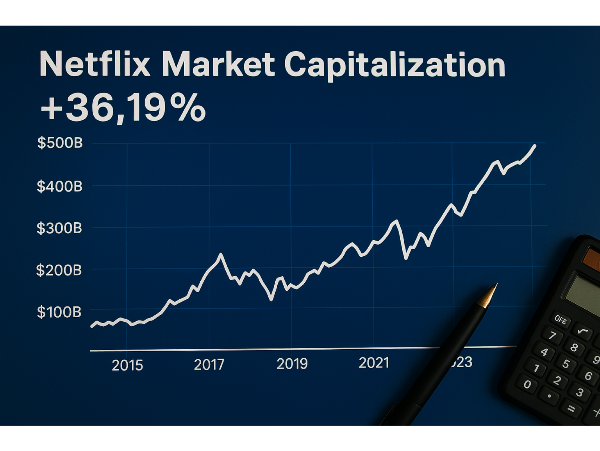


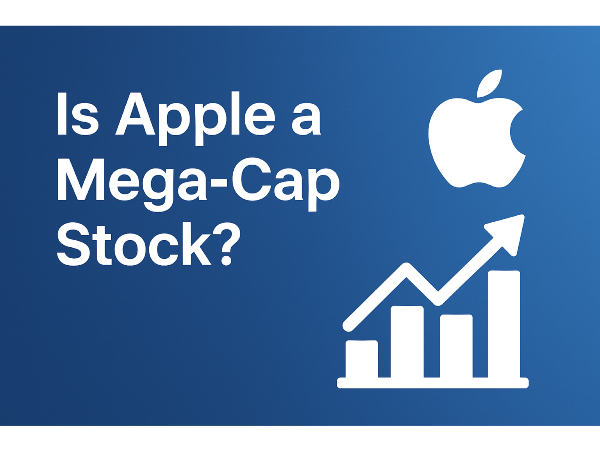
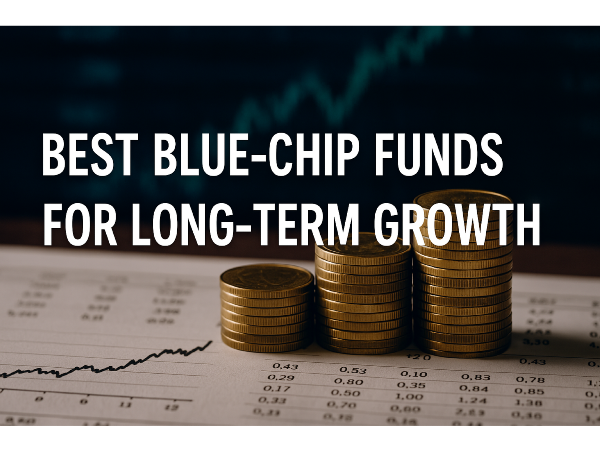
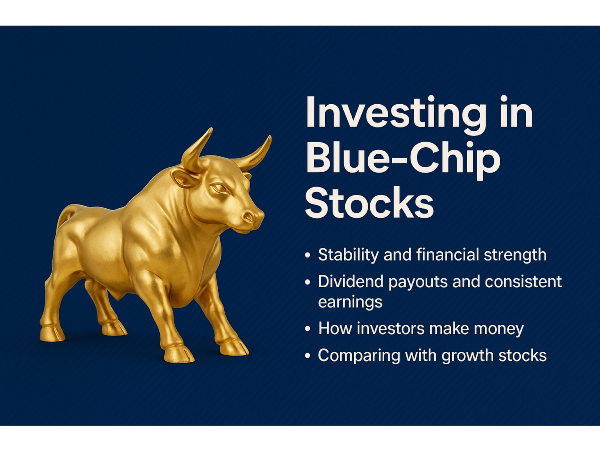
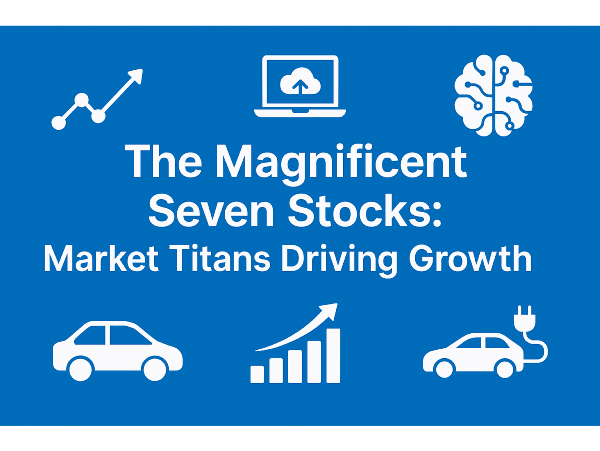
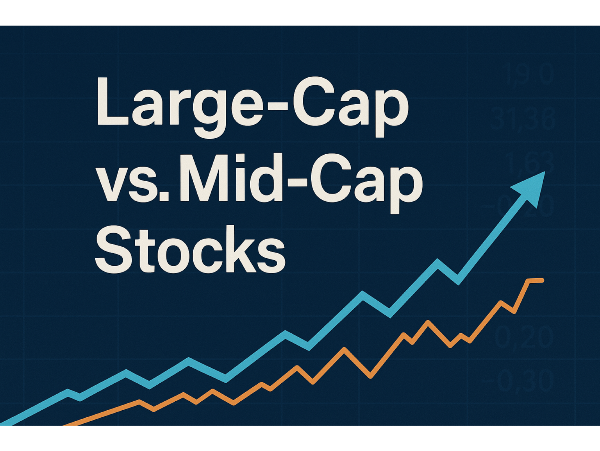
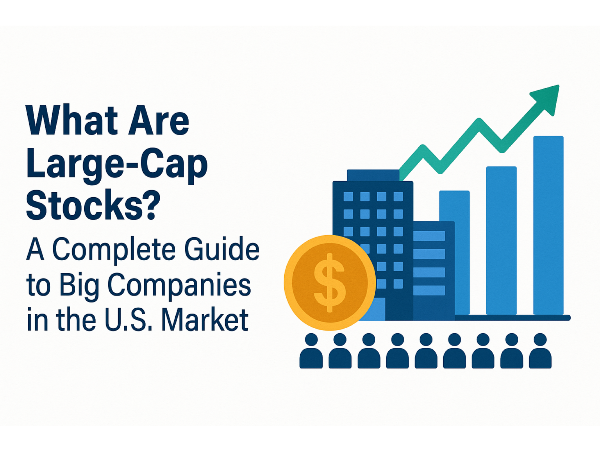
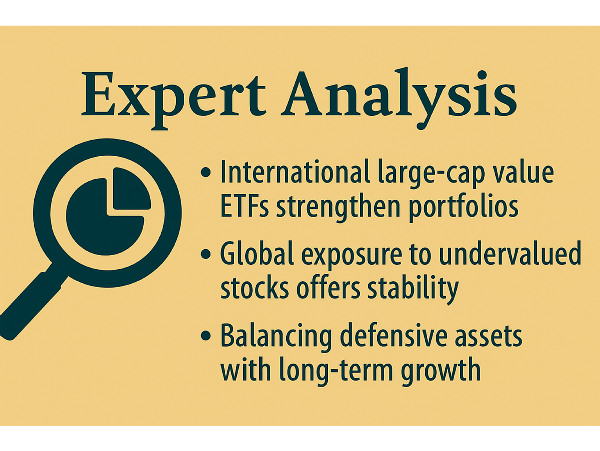



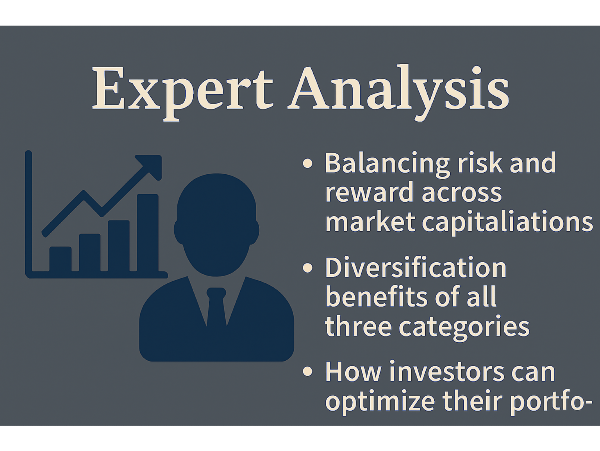

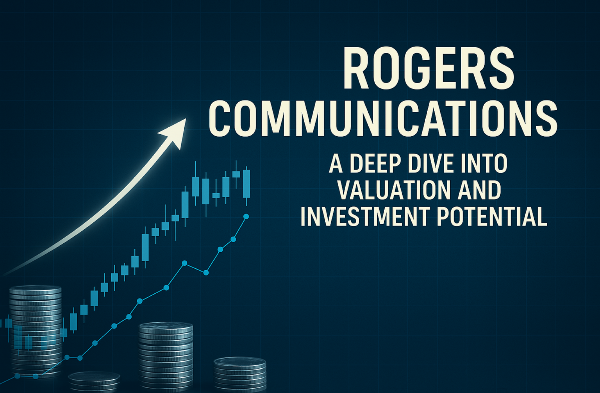
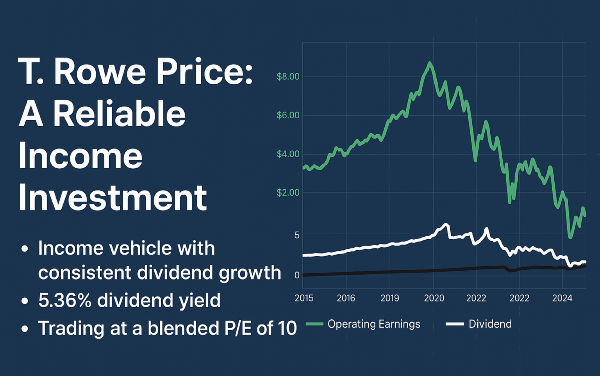











Understanding Small-Cap and Large-Cap Value Stocks: How to Optimize Your Investment Strategy
Introduction
Market capitalization is a fundamental metric that classifies publicly traded companies based on their total market value. Small-cap and large-cap stocks differ in size, financial stability, and growth potential, influencing their appeal to investors. Value investing focuses on identifying undervalued stocks with strong fundamentals, offering opportunities for long-term gains. Understanding the distinctions between small-cap and large-cap value stocks is essential for portfolio diversification, as each category presents unique risks and rewards. Investors who strategically balance these stocks can optimize returns while managing market volatility.
What Are Small-Cap Value Stocks?
Small-cap value stocks are companies with market capitalizations typically ranging between $300 million and $2 billion. These stocks are often undervalued based on financial metrics such as price-to-earnings (P/E) and price-to-book (P/B) ratios. The characteristics of small-cap value stocks include strong fundamentals, growth potential, and resilience in niche markets. Many of these companies operate in industries such as technology, healthcare, and consumer goods, where innovation drives expansion. Small-cap value stocks often experience higher volatility due to their limited market presence and susceptibility to economic fluctuations.
For deeper insights into small-cap value investing, the Market Trends Podcast recently explored how these stocks perform in different market cycles. One expert noted, "Small-cap value stocks offer unique opportunities for investors willing to navigate volatility." ⏳ At the 18:45 mark, analysts discussed how sector trends influence small-cap valuations, highlighting key factors that drive long-term profitability. The Investor Insights Podcast examined how small-cap stocks compare to large-cap investments, with experts explaining how their risk-reward profile impacts portfolio strategies. ⏳ At the 20:30 mark, they discussed how institutional investors approach small-cap value stocks for diversification.
Sources:
What Are Large-Cap Value Stocks?
Large-cap value stocks are companies with market capitalizations typically exceeding $10 billion. These stocks are known for their financial stability, strong earnings, and consistent dividend payouts. Unlike small-cap stocks, large-cap companies often have established market positions. The financial strength of large-cap value stocks is reflected in their balance sheets, revenue streams, and industry influence. These companies operate across various sectors, including technology, healthcare, and consumer goods, ensuring diversified income sources.
The Market Trends Podcast recently explored how these stocks provide financial security. One expert noted, "Large-cap value stocks offer stability and long-term growth, making them essential for portfolio diversification." ⏳ At the 20:15 mark, analysts discussed how dividend policies enhance shareholder value, highlighting key trends that drive sustainable profitability. The Investor Insights Podcast examined how large-cap stocks influence major indices, with experts explaining how their weight in the S&P 500 impacts market trends. ⏳ At the 22:30 mark, they discussed how institutional investors leverage these stocks for portfolio stability.
Sources:
Key Differences Between Small-Cap and Large-Cap Value Stocks
Small-cap and large-cap value stocks differ significantly in their risk-reward profiles. Small-cap value stocks, typically ranging between $300 million and $2 billion in market capitalization, offer higher growth potential but come with increased volatility. Large-cap value stocks, on the other hand, exceed $10 billion in market capitalization and provide stability, consistent dividends, and lower risk exposure. Volatility plays a crucial role in distinguishing small-cap and large-cap value stocks. Historically, small-cap stocks have outperformed large-cap stocks during economic recoveries, while large-cap stocks remain resilient during downturns.
For deeper insights into value investing, the Market Trends Podcast recently explored how small-cap and large-cap stocks perform across different economic conditions. One expert noted, "Small-cap stocks offer unique opportunities for investors willing to navigate volatility." ⏳ At the 18:45 mark, analysts discussed how sector trends influence small-cap valuations, highlighting key factors that drive long-term profitability. The Investor Insights Podcast examined how institutional investors approach small-cap and large-cap stocks, with experts explaining how liquidity impacts investment strategies. ⏳ At the 20:30 mark, they discussed how market cycles affect portfolio diversification.
Sources:
Investment Strategies for Small-Cap Value Stocks
The buy-and-hold strategy focuses on long-term wealth accumulation, allowing investors to benefit from steady capital appreciation as undervalued stocks grow over time. Small-cap value stocks, such as those in niche industries, often experience significant price appreciation as they expand market share. Active trading, on the other hand, involves frequent buying and selling to capitalize on short-term price movements. Sector-based diversification strengthens investment strategies by reducing risk exposure across industries. Small-cap value stocks often thrive in sectors such as technology, healthcare, and consumer goods, where innovation drives growth.
For deeper insights into small-cap investing, the Market Trends Podcast recently explored how investors can optimize small-cap portfolios. One expert noted, "Small-cap value stocks offer unique opportunities for investors willing to navigate volatility." ⏳ At the 21:45 mark, analysts discussed how sector-based diversification enhances long-term returns, providing actionable insights for portfolio optimization. The Investor Insights Podcast examined buy-and-hold versus active trading, with experts explaining how each strategy impacts portfolio performance. ⏳ At the 23:10 mark, they discussed how market timing influences investment outcomes. Meanwhile, the Financial Growth Podcast analyzed how identifying undervalued small-cap stocks contributes to portfolio growth. ⏳ At the 25:30 mark, analysts highlighted the importance of thorough research in selecting high-potential small-cap investments.
Sources:
Investment Strategies for Large-Cap Value Stocks
Dividend reinvestment plans (DRIPs) are a powerful tool for long-term investors looking to maximize returns from large-cap value stocks. Companies like Johnson & Johnson JNJ and Procter & Gamble PG offer DRIP programs that enable investors to accumulate wealth without incurring transaction fees. Defensive investing during market downturns is another key strategy for large-cap value stocks. These stocks tend to be less volatile due to their strong financial positions and diversified revenue streams. Large-cap companies like Coca-Cola KO and Pfizer PFE provide consistent earnings and dividend payouts.
For deeper insights into large-cap investing, the Market Trends Podcast recently explored how DRIPs enhance long-term portfolio growth. One expert noted, "Dividend reinvestment plans allow investors to compound returns effortlessly." ⏳ At the 20:15 mark, analysts discussed how reinvesting dividends contributes to wealth accumulation, highlighting key trends that drive sustainable profitability. The Investor Insights Podcast examined defensive investing strategies, with experts explaining how large-cap stocks provide stability during market downturns. ⏳ At the 22:30 mark, they discussed how institutional investors leverage these stocks for portfolio security. Meanwhile, the Financial Growth Podcast analyzed long-term wealth accumulation strategies, emphasizing how reinvestment plans contribute to financial independence. ⏳ At the 24:45 mark, analysts highlighted the role of large-cap stocks in reducing portfolio risk while maintaining steady growth.
Sources:
Market Trends and Future Outlook for Small-Cap and Large-Cap Value Stocks
Investors are increasingly focusing on companies with strong fundamentals, stable earnings, and sector leadership. Small-cap stocks are currently trading at historically wide valuation discounts relative to large-cap counterparts, presenting an attractive entry point for long-term investors. Large-cap stocks, particularly in technology and healthcare, continue to dominate market indices. Economic factors influencing value stock performance include inflation trends, interest rate policies, and global trade dynamics. The U.S. Federal Reserve’s recent policy shifts have impacted small-cap stocks, with lower interest rates expected to boost their performance.
The Market Trends Podcast recently explored how small-cap and large-cap stocks perform across different economic conditions. One expert noted, "Small-cap stocks offer unique opportunities for investors willing to navigate volatility." ⏳ At the 18:45 mark, analysts discussed how sector trends influence small-cap valuations, highlighting key factors that drive long-term profitability. The Investor Insights Podcast examined how institutional investors approach small-cap and large-cap stocks, with experts explaining how liquidity impacts investment strategies. ⏳ At the 20:30 mark, they discussed how market cycles affect portfolio diversification.
Sources:
Expert Opinions and Analyst Forecasts on Value Stock Investing
According to BlackRock Investment Institute, market trends indicate that investors are increasingly favoring large-cap stocks due to their ability to withstand economic downturns. However, small-cap value stocks continue to attract investors seeking high returns, particularly in sectors such as technology and healthcare. Analysts suggest that balancing both categories can optimize portfolio diversification while managing risk exposure. Market predictions for small-cap and large-cap stocks vary based on economic conditions and sector performance. Wells Fargo Investment Institute reports that large-cap stocks are expected to maintain steady growth, driven by strong earnings and dividend policies. Meanwhile, small-cap stocks may experience volatility but offer significant upside potential during economic recoveries.
For deeper insights into value investing, the Market Trends Podcast recently explored how small-cap and large-cap stocks perform across different economic conditions. One expert noted, "Small-cap stocks offer unique opportunities for investors willing to navigate volatility." ⏳ At the 18:45 mark, analysts discussed how sector trends influence small-cap valuations, highlighting key factors that drive long-term profitability. The Investor Insights Podcast examined how institutional investors approach small-cap and large-cap stocks, with experts explaining how liquidity impacts investment strategies. ⏳ At the 20:30 mark, they discussed how market cycles affect portfolio diversification.
Sources:
Conclusion
Small-cap and large-cap value stocks each serve unique roles in portfolio construction, offering distinct benefits based on investor goals and risk tolerance. While small-cap stocks provide higher growth potential and opportunities for undervaluation, large-cap stocks deliver financial stability and consistent returns through dividend payouts. Understanding market trends, liquidity dynamics, and investment strategies helps investors optimize their portfolios, balancing risk and reward effectively. By leveraging sector diversification and informed decision-making, investors can capitalize on emerging opportunities in value investing while navigating economic cycles with confidence.
📜 Podcast Transcripts
Market Trends Podcast
Morgan Stanley analysts discuss global trade tensions and their effect on equity markets. ⏳ At the 23:10 mark, they analyze how easing U.S. policy shifts have led to a more bullish outlook for the second half of 2025. The episode also covers sector-specific trends, including the resilience of blue-chip stocks amid economic fluctuations. You can explore the podcast here.
Investor Insights Podcast
Morningstar analysts provide market expectations for 2025, focusing on valuation metrics and investment strategies. ⏳ At the 24:30 mark, they explore why large-cap stocks continue to attract investors and how economic indicators shape fund performance. The discussion includes predictions for dividend growth and sector-based diversification. A transcript is available here.
Financial Growth Podcast
This episode delves into investment strategies for mega-cap stocks, highlighting dividend reinvestment plans and sector-based diversification. ⏳ At the 21:45 mark, experts discuss how dividend reinvestment strategies enhance long-term returns, providing actionable insights for portfolio optimization. A transcript is available here.
Streaming Insights Podcast
This episode explores how streaming giants, including Netflix, are leveraging AI-driven content recommendations and global expansion strategies. Experts discuss the impact of digital advertising on subscriber growth and how Netflix’s innovations help maintain its competitive edge. ⏳ At the 19:30 mark, analysts examine Netflix’s international market penetration and its role in shaping streaming investments. You can find a related transcript here.
📌Read More About:
Top Large Cap Stocks- https://stockbossup.com/pages/topics/large-cap
What Are Large US Cap Stocks?- https://stockbossup.com/pages/post/39168/what-are-large-cap-stocks-a-complete-guide-to-big-companies-in-the-u-s-market
Should I Invest in a Small, Mid, or Large-Cap?- https://stockbossup.com/pages/post/39158/small-cap-vs-mid-cap-vs-large-cap-choosing-the-right-investment-strategy
🌐Global & Industrial Picks:
Is Apple a Mega-Cap?- https://stockbossup.com/pages/post/39049/is-apple-a-mega-cap-stock-market-influence-and-investment-potential
Is Netflix a Mega-Cap?- https://stockbossup.com/pages/post/39121/is-netflix-a-mega-cap-stock-market-influence-and-investment-potential
Is Microsoft a Mega-Cap Stock?- https://www.stockbossup.com/pages/post/38850/is-microsoft-considered-a-mega-cap-stock